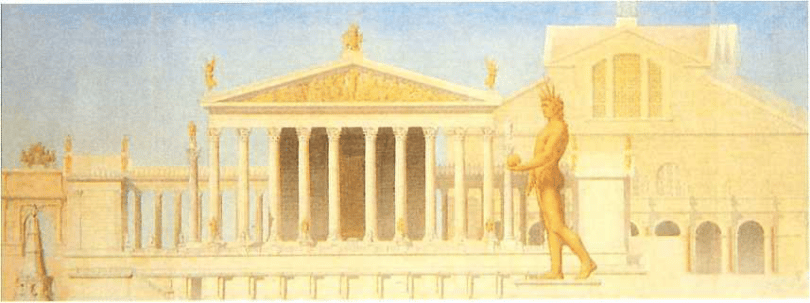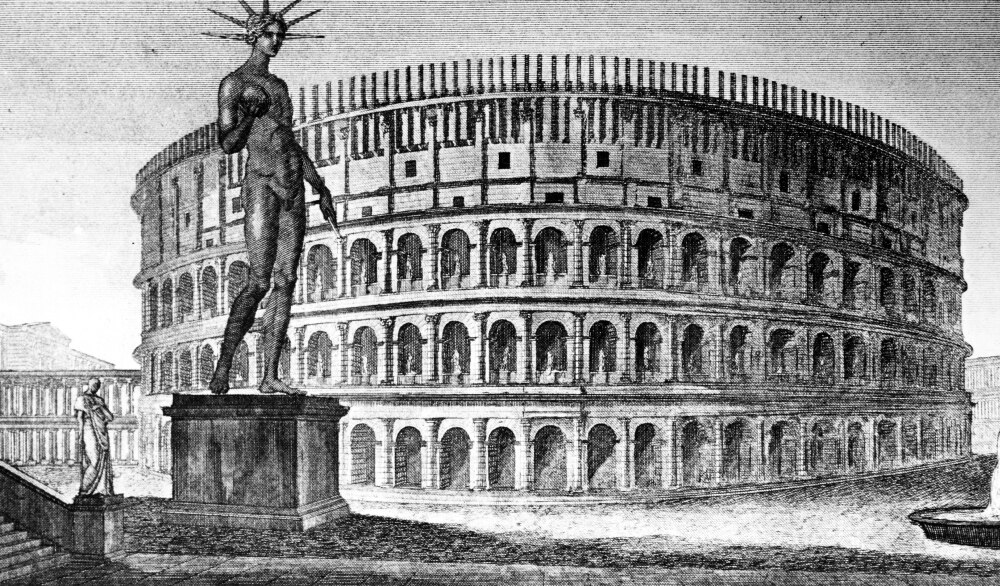


He also created wide streets and open spaces to help improve circulation and prevent congestion. He decreed that all buildings must be constructed of brick or stone, with tiled roofs to prevent future fires.

Colosseum is the medieval name for the structure. One thing that has never been in question is that after the fire that devastated Rome, Nero took the opportunity to set some new urban rules for Rome. The Colosseum was identified by the family name of the three Emperors who built it, Flavius, hence Amphitheatrum Flavium (Hopkins & Beard, 2005). The Colossus of Nero (Colossus Neronis) was a 30-metre (98 ft) bronze statue that the Emperor Nero (3768 AD) created in the vestibule of his Domus Aurea, the imperial villa complex which spanned a large area from the north side of the Palatine Hill, across the Velian ridge to the Esquiline Hill. Nero is one of the most infamous rulers in history, thanks in part to the legend that he “fiddled while Rome burned.” But, it later turned out that he was not even in the city-and that it was probably an attempt of the Senate to discredit him. And after the fire, he improved the infrastructure of Rome and made many reforms that enhanced the urban design of the “eternal city.” 9 Nero Set New Urban Rules for Rome He often went out of his way to help those in need, even providing food to the people. He was outside Rome and returned immediately to take charge of the situation.ĭespite his reputation as a tyrant, Nero was quite kind to the Romans, who lost everything. In AD 64, a great fire destroyed much of Rome, leaving hundreds of thousands of people living on the streets and countless Roman citizens dead. Believe it or not, during the fire in Rome, Nero was a very generous leader and helped rebuild Rome after the devastation.


 0 kommentar(er)
0 kommentar(er)
